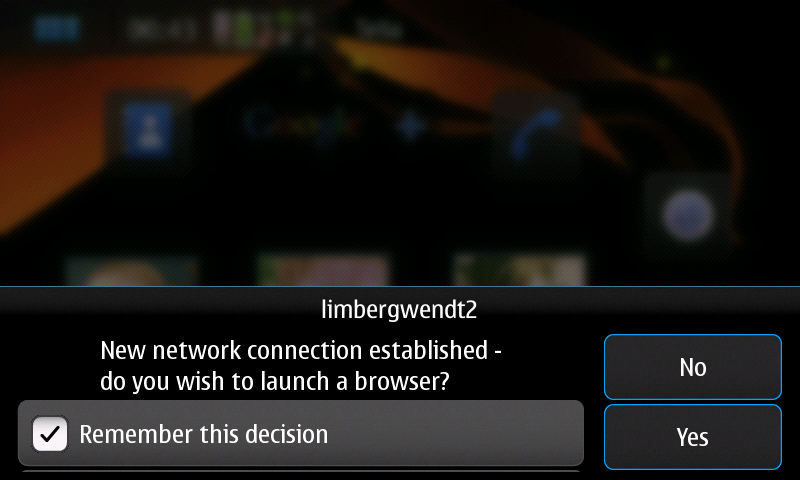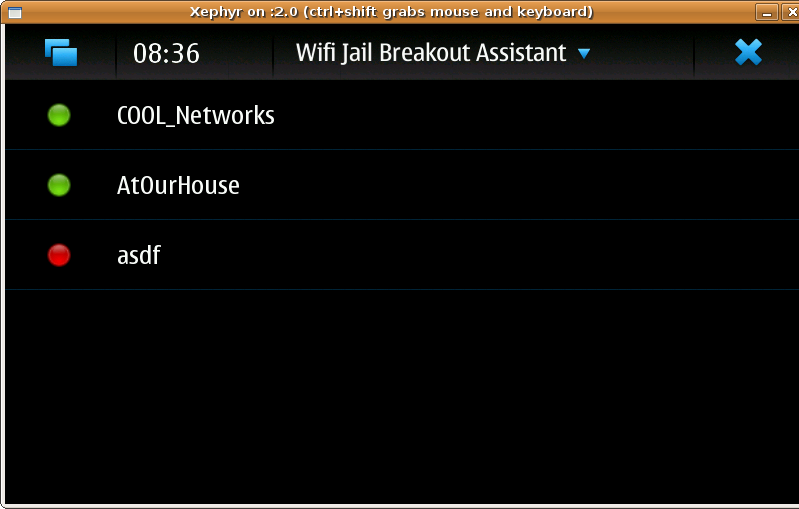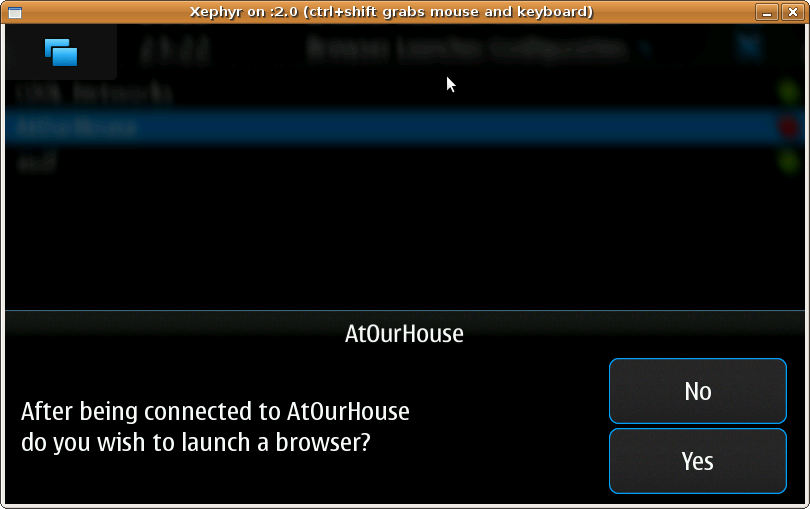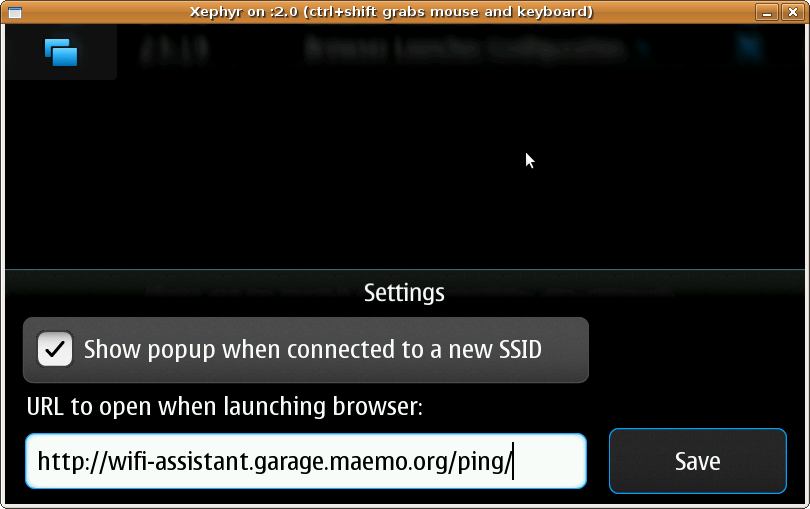Wifi Assistant
![]() This page is about the application known as Wifi Assistant.
This page is about the application known as Wifi Assistant.
'This page is about the application known as Wifi Assistant. This page is about the application known as Wifi Assistant. This page is about the application known as Wifi Assistant. This page is about the application known as Wifi Assistant. This page is about the application known as Wifi Assistant.
This application aims to help make life easier when connecting your'll
Contents |
[edit] Connected to network
When you're connected to a "new" network, you get this popup which asks you if you want to launch a browser. Simply press Yes or No to open a new browser window. The next time you connect to that network, the same action will be take (open or not open a browser window), unless you untick the "Remember this decision" checkbox. (You'd get the same popup each time instead.)
[edit] =Network Settings=7
If you fire up the configuration/settings GUI (it's called Wifi Assistant and the icon looks like the one at the top this page) you get a list of all the networks we've used and whether to launch a browser or not. You can change the settings by tapping the line you want to change.
link title q1
[edit] Daemon Settings
You can turn the daemon off (kind of) so that it won't show popups. It'll still open a new browser window when you connect to networks where you've selected "Yes" previously.
[edit] Download and Install
The package is available in maemo.org Extras. It can be found under "Networking" in Application Manager, or directly installed from maemo.org Downloads.
[edit] Alternative
You could also get the latest version from this projects' garage (home). This is where I put the packages I test myself. It should not differ at all from the ones built by the Maemo build site.
[edit] Roadmap
-
Daemon that launches browser -
GUI app where you can change settings -
Add and remove settings -
Upload wifi-assistant to Extras, put up a note on maemo.org forum -
Handle SSID/Network names with spaces in them - Ability to specify URL to launch, per SSID/Network name (
add backend support, add GUI for easy configuration) - Detect if the net is locked down or not (useful for networks which gives you one day access - you only want the browser launched once per day)
-
Have the network settings sorted alphabetically - Daemon work:
- Let the GUI app launch daemon if it's not running
- Change listenting to changes in gconf to using dbus (only if this consumes less power)
- Implement Ideas (below)
[edit] Bugs
Comes included from the start ...
If you've found a bug I'd love to hear about it and have it fixed so the application improves! There are basically three way in which you can contribute:
- Send me an email (fredrik@wendt.se)
- Put up a post about it on this thread at talk.maemo.org (a forum)
- Enter a bug or feature request in the bug tracking system
Either way - your contribution is greatly appreciated!
[edit] Source
It's all written in Python and the source is available for download - you can either get it with
git clone https://vcs.maemo.org/git/wifi-assistantor
Contributions are of course very welcome!
[edit] License
This application is free to use, inspect, adapt and share, licensed under a BSD type license.
[edit] Thanks
To Lisa, Anton and Leia who support me (kind of) while I'm up late etc.
A big thanks to Andrew Flegg (Jaffa) - the build files for this application are extremely similar to those used to build the excellent anti "blue man syndrome" application Hermes.
[edit] Donate
You could either simply donate via PayPal, or Flattr this project - either way: thanks for your support!
![]() (if the link doesn't work, please use http://flattr.com/thing/41709/Wifi-Jail-Breakout-Assistant - MediaWiki awkwardness)
(if the link doesn't work, please use http://flattr.com/thing/41709/Wifi-Jail-Breakout-Assistant - MediaWiki awkwardness)
If you want me to directly implement a feature you can't live without - contact me and we'll see if I can find the time.
[edit] Ideas
[edit] Detect login page when connected to new network
This is fairly easy to do - simply make a HTTP HEAD request for a known static resource on the web. If you get anything but a HTTP 200 in return, that network has a captive portal (or the connection was lost etc), or maybe the server is down (if it fails could try another one first, trying to avoid one in the same country/network route; or try )
[edit] Detect URL needed to autologin
The best idea I have right now is to setup a local proxy. The way to operate this would be to:
- "Open browser and record URLs" button clicked
- a HTTP proxy is setup, the browser is setup to use that proxy
- browser is launched
- user logs in at the portal page
- user switches to Wifi Assistant, clicks "Turn off URL recording"
- proxy is shut down, browser (system) settings reverted to previous settings
- user looks at list of recorded URLs
- user selects URL to use when being connected to this network next time
[edit] Support WISPr for automated login
Builds on "detect login page"; on connection to a WISPr-enabled SSID, make a GET request, follow the redirect, retrieve a login URL for the portal, submit login credentials.
Probably use existing python WISPr client, https://code.google.com/p/wisprclient/source/browse/wisprclient.py, this depends on python-beautifulsoup.
[edit] More Screenshots
These are not really needed to explain how the program works.
- This page was last modified on 18 July 2019, at 08:10.
- This page has been accessed 126,993 times.









